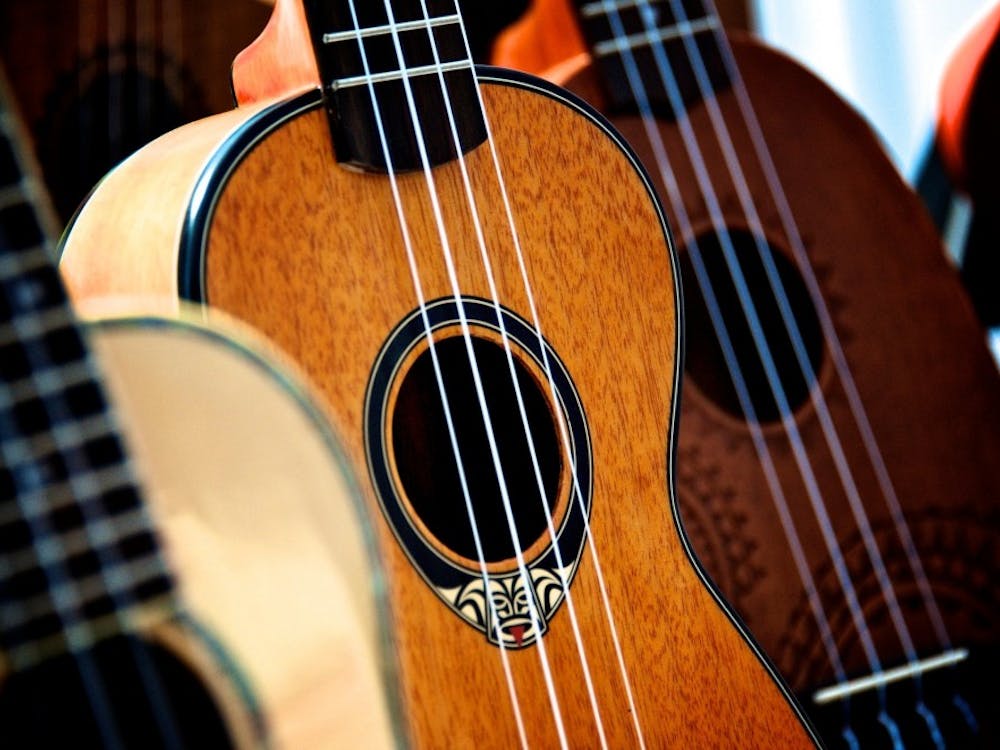The 1975 just finished performing one of their songs at the Moda Center. I’m with my friends, I’m screaming my head off, I’m amazed at the genius of this band before me when suddenly, a phrase flashes in bold above the performers: “Rock 'n' roll is dead.”
I dropped my arms in confusion. Do these four brilliant artists not hear the rock influence in their own music?
It’s possible that they were being ironic. In fact, a lot of Matt Healy’s songwriting is purposefully ironic. Nevertheless, the phrase struck me, and I wanted to find a way around it. To me, rock has always been a relevant and vibrant genre of music.
But I know that there isn’t much on the radio that sounds like any of the greats we associate with rock — The Beatles, Rolling Stones, Pink Floyd, Hendrix — so I was almost convinced that perhaps, The 1975 band members were right.
That’s when Beyoncé rescued me from my doubt.
What do Beyoncé and rock have in common? Beyoncé samples Led Zeppelin in her song “Don’t Hurt Yourself,” starting off the song with a similar drumming pattern used in Led Zeppelin’s “When the Levee Breaks,” a song several artists have sampled. To further emphasize her nod to the iconic rock group, Beyoncé also uses a riff straight out of Led Zeppelin’s “Kashmir” in her Coachella performance of “Don’t Hurt Yourself,” as seen in the Netflix film, “Homecoming.”
Other mainstream artists have also taken samples from well-known rock legends. For his song “Wild Thoughts” with Rihanna, DJ Khaled takes practically “Maria Maria.” Lady Gaga uses the iconic stomp-clap combination from Queen’s “We Will Rock You" in her song "You and I."
But it’s not just sampling in mainstream music that keeps rock alive and well. It’s innovation. In fact, innovation is a fundamental characteristic of rock 'n' roll. That’s the reason we can see the huge transition from the lighter, dancier tunes of Chuck Berry and Elvis Presley in the ‘50s to the heavy, somber sounds of Nirvana and Pearl Jam in the ‘90s.
Harry Styles — another artist that helped me keep the faith — is an example of rock’s current state. He managed to get a full-on rock n’ roll song, “Kiwi,” to play on the radio alongside pop music coming from Ariana Grande and Katy Perry. In fact, Styles’ whole debut album is straight-up rock, so much so that some critics have referred to him as the genre’s “savior.” He dresses the part, wearing flared pants that point to ‘70s fashion and painting his nails black.
Other artists and bands have tried to do the same thing Styles seems to have accomplished: bring back remnants of the classic rock days. Greta Van Fleet, a four-person band reminiscent of Led Zeppelin with a lead vocalist that sounds smack like Robert Plant, has found substantial commercial success. But success for a band like GVF isn’t common nowadays.
But Billie Eilish, a much more popular artist that has called herself the creator of a new kind of music, is also exemplifying rock’s continued reformation. Her music is inventive with critical social commentary that is sometimes eerie and a little difficult to process, but definitely something people want to keep on repeat. What could be more rock ‘n’ roll than that? (Plus, she got the approval from Foo Fighters’ frontman, Dave Grohl, himself, who compared her to Nirvana.)
Other artists pushing the boundaries of rock while keeping the genre very much alive are Childish Gambino and Anderson .Paak, both of whom incorporate traditional rock sounds in their music. Childish Gambino experiments with a variety of styles, but includes psychedelic rock in songs like “Redbone” and “Me and Your Mama.” Anderson .Paak on the other hand exhibits funk rock in some of his songs, like “Come Down” and “Put Me Thru.”
The point is that rock is a broad genre of music that has never really had a definitive sound. To this day there are so many different kinds of rock: soft, heavy, folk, grunge, psychedelic. There’s even pop-rock, country rock, and believe it or not, rock opera is also a thing. How can a genre of music that encompasses such a variety of sound and interpretation be declared dead?
But even if we put the modernization of rock aside, the genre can’t die simply because it is too well known, too iconic, too celebrated to ever be considered dead. Just in the past year we’ve seen the film releases of “Bohemian Rhapsody,” “Rocketman” and “Yesterday” — movies that not only commemorate rock artists, but also include songs that most people can identify after the first few notes. Songs like “Somebody to Love,” “Bennie and the Jets” and “Hey Jude” seem like they will never be forgotten.
Maybe The 1975 had a point. We probably won’t hear the original sounds of rock 'n' roll on mainstream radio anytime soon. But rock will continue to stretch, bend and grow as a genre because it won’t be confined. It will defy expectations because that’s its nature. It will rebel and persist despite the doubtful comments of critics; change despite the traditionalists; and take on new voices and looks, because going against the grain and embracing what’s never been done is a very rock 'n' roll thing to do.
Ana Clyde is a senior sports reporter and the copy editor for The Beacon. She can be reached at clyde20@up.edu.








